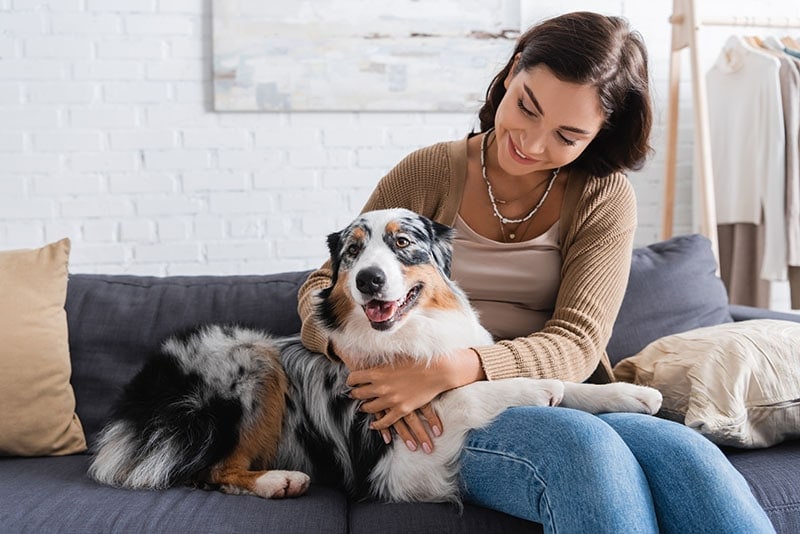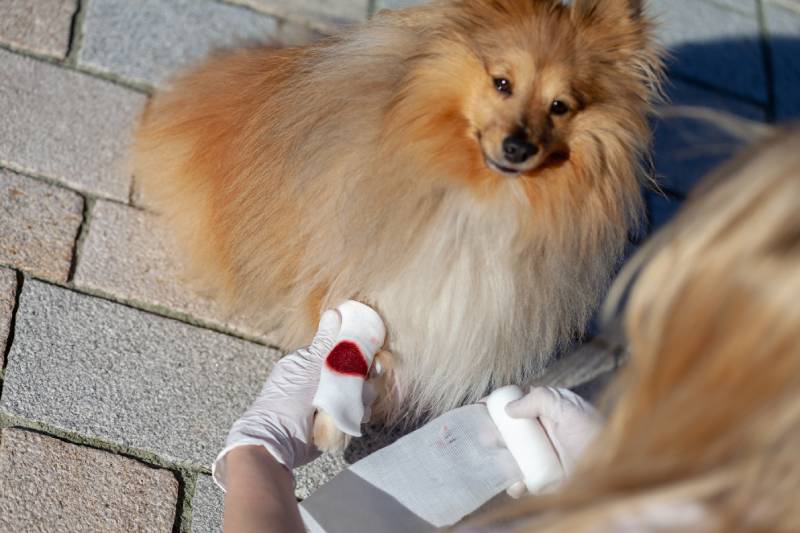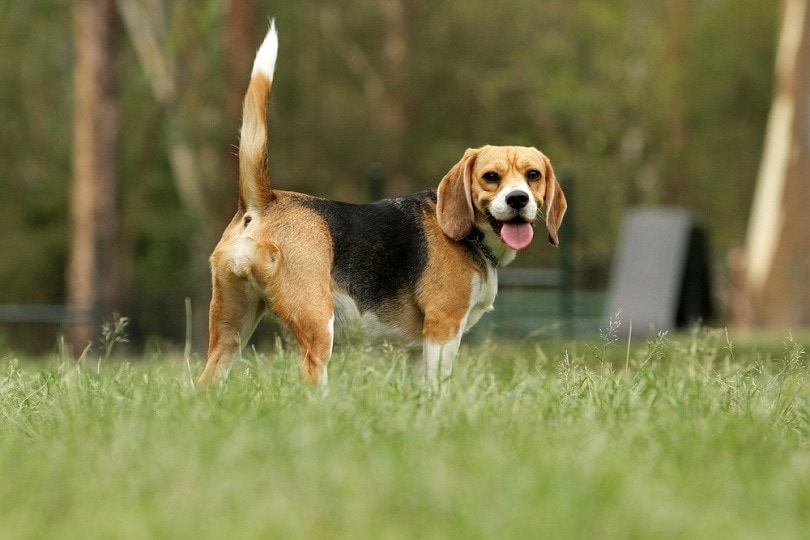Toy Poodle vs Miniature Poodle: What’s the Difference? (With Pictures)
By Ashley Bates
Updated on
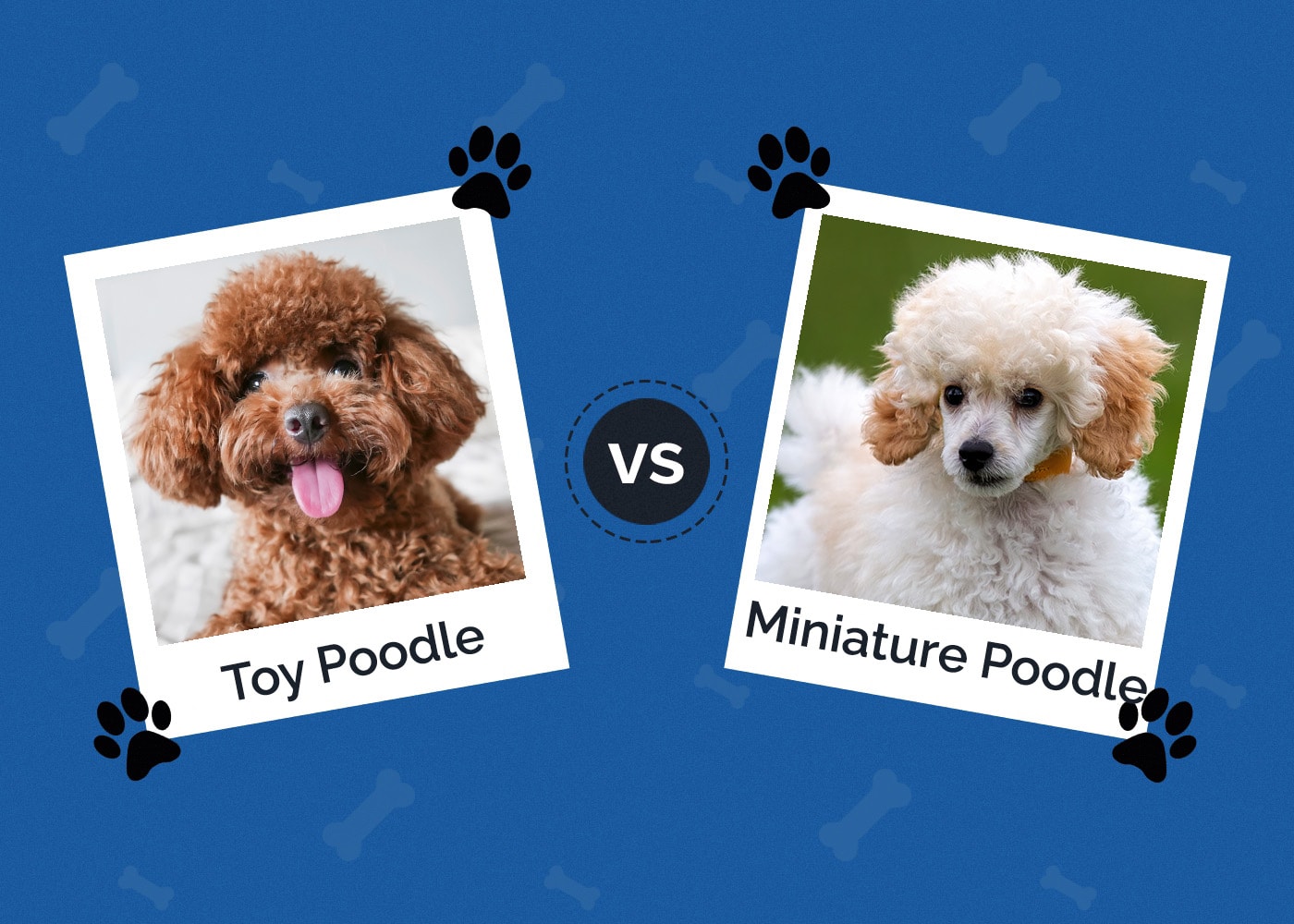
If you love poodles, you probably already know they come in several different size variations. If you live in an apartment or just love small dogs, you probably gravitate more toward miniature or toy poodles.
But realistically, what are the differences between the two? Are they really that drastic, and does it really matter what you choose? Here we’re going to go over all the characteristics you can expect from both, even though they don’t differ much.
Hopefully, after reading this article, you can decide which size poodle works best for your situation.
Visual Differences
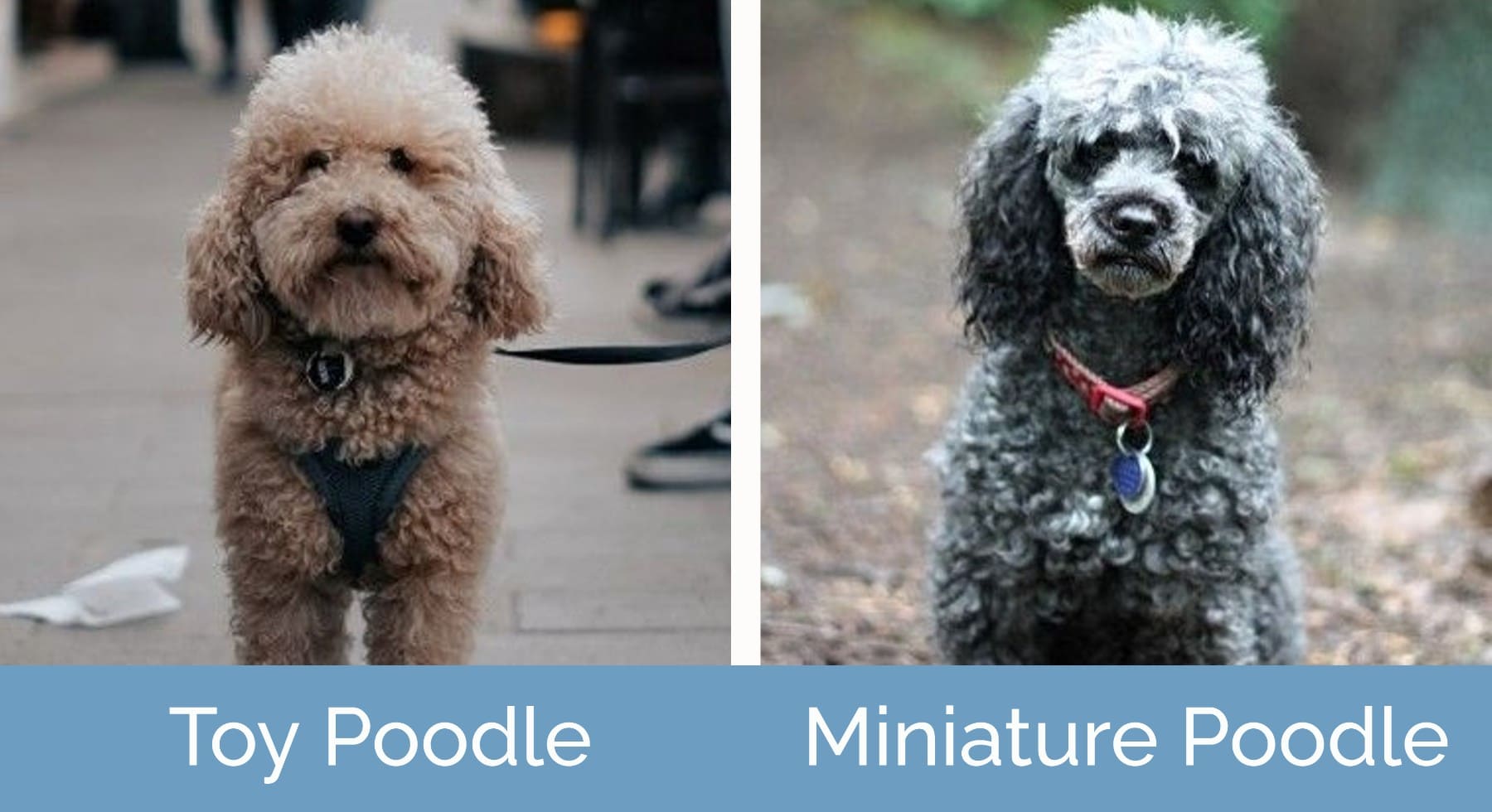
At a Glance
- Average height (adult): 5 – 11 inches
- Average weight (adult): 5 – 11 pounds
- Lifespan: 15 – 18 years
- Exercise: 60 minutes per day
- Grooming needs: Moderate
- Family-friendly: Yes
- Other pet-friendly: Often
- Trainability: Intelligent but stubborn
- Average height (adult): 12 – 15 inches
- Average weight (adult): 15 – 17 pounds
- Lifespan: 13 – 15 years
- Exercise: 5 hours a day
- Grooming needs: Moderate
- Family-friendly: Yes
- Other pet-friendly: Often
- Trainability: Intelligent but stubborn
Toy Poodle Overview
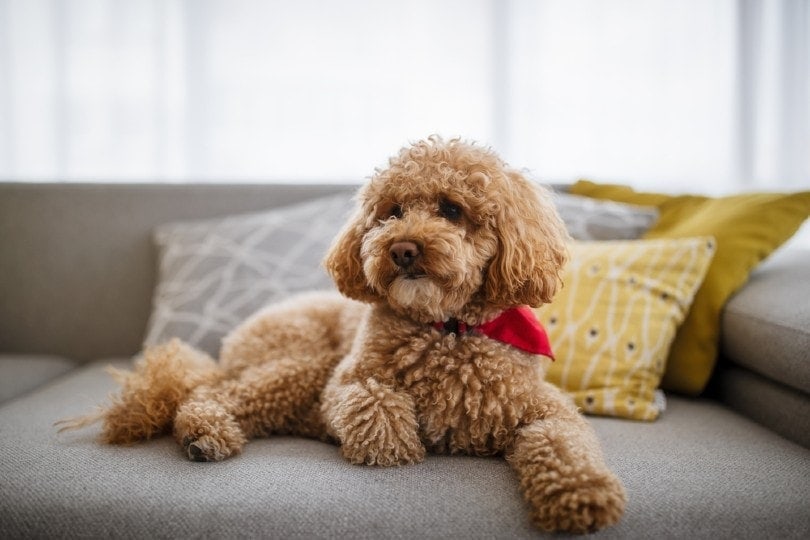
One of the only differences between toy and miniature poodles is their size. But here we’ll go over what to expect when you own a toy poodle. Coincidentally, it’s much similar to the miniature variety.
Personality/Character
Toy poodles tend to be very cheerful little dogs with a peppy lifestyle. They are chipper and ready to play and cuddle up with their favorite human. These dogs tend to be incredibly loyal and might even be a purse or lapdog by nature.
It isn’t always a general rule, but some toy poodles might experience a bit of “small dog syndrome.” Since they are pretty tiny, they might also have bigger fears that can lead to anxiety in the right situations.
These little ones also tend to be very connected to their owners and sometimes might favor one person. Because they can get so attached, they might experience slight to severe separation anxiety. But one thing is for sure—this is one loyal companion.
Exercise
You might need to take it easy on your toy poodle if you are a person with physical disabilities or limited mobility. They much prefer cuddling up on your lap or walking beside you to escort you to the bathroom. They only need about two 30-minute walk sessions per day or less.
This is your classic “purse” dog, being a welcome accessory for toting along on the go rather than making long hikes. In fact, their little bodies can tucker out quickly, so make sure to take them on short jaunts and be ready to carry them when they need it.
Training
It should be a breeze to train your toy poodle. They are brilliant dogs just like the standard variety. They tend to have similar capabilities, though they might be slightly more challenging in some aspects than their larger varieties.
The only issue you might run into is a problem with toilet training. Because they are so small, they have much smaller bladders than normal dogs. So you might have to puppy pad train as a safety net.
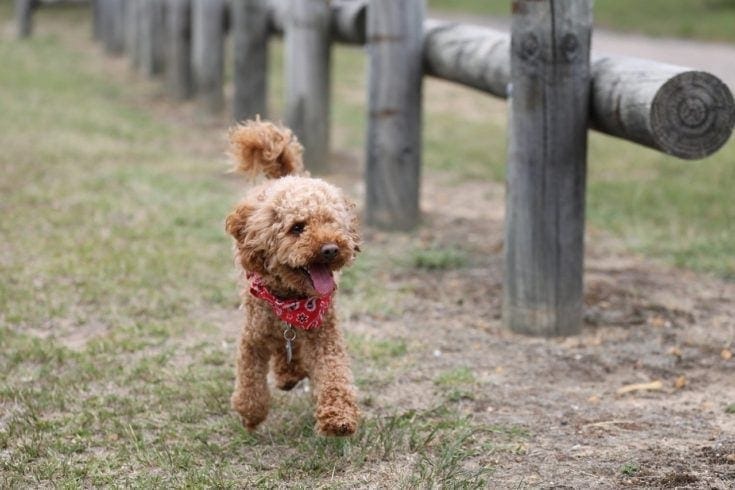
Health & Care
Toy poodles are generally very healthy, just like the larger varieties. However, they can suffer from mild inconveniences, such as getting colder faster than their larger counterparts. This is mainly due to a reduction in body weight. Also, they are more susceptible to injury.
Suitable for:
Toy poodles make a good family dog, but they do best with one main caregiver. That makes them an awesome companion for retired couples or senior citizens. They also do very well with single owners who have a lot of time to spend with them as they tend to be Velcro dogs.
Toy poodles might not be the best choice for small children as they are very small and fragile, not being great candidates for rough play.
Miniature Poodle Overview

Miniature poodles weigh roughly five pounds more than the toy variety, but that can go up or down, depending on the dog. Since they are larger, they are a bit sturdier than their smaller counterparts.
Personality/Character
Much like the toy poodle, miniature poodles are very amiable and full of personality. These little dogs tend to get very attached to their owners and make charming additions to many different lifestyles.
Unlike some other small breeds, these dogs don’t often suffer from little dog syndrome, making them compatible with other pets—no problem. They also make awesome first dogs or companions with small children.
Exercise
Your little toy poodle will love getting out of the house to stretch its legs and see the sights. Miniature poodles require a bit more exercise than their toy counterparts. They don’t take her out as easily, having lots of time for leaps, bounds, and play.
But they don’t require extensive exercise like a larger breed, making them perfect for calmer lifestyles.
Training
Like all other poodle variations, miniature poodles are generally a breeze to train. These little ones tend to be very obedient and easily catch on to new concepts. They pick up ideas quickly and love to please their owners.
Because they’re slightly larger than their toy counterparts, they don’t have as much trouble with accidents in the house. Although, you might have to supplement outdoor visits with puppy pads.
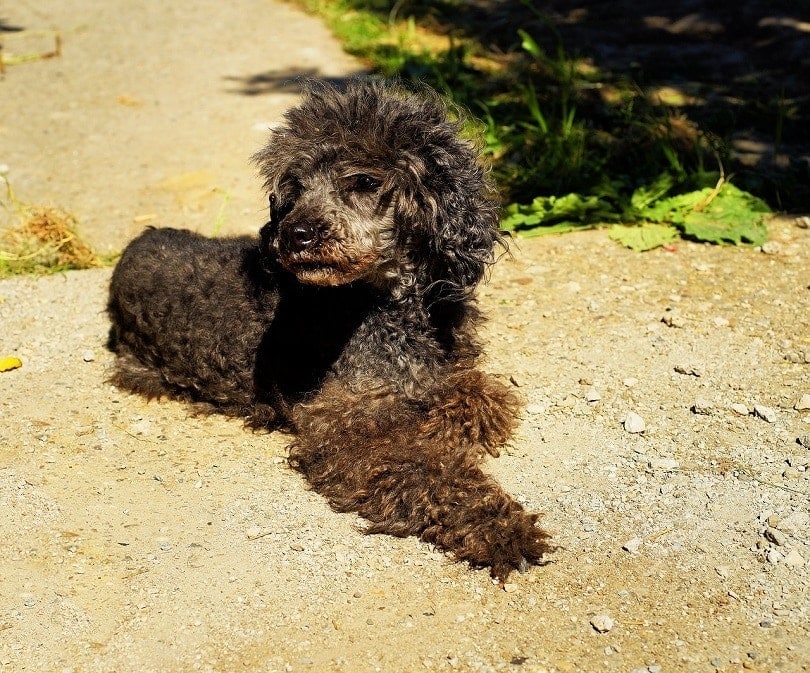
Health & Care
Miniature poodles are generally very able-bodied and healthy. They don’t suffer from many genetic diseases and live long, lustrous lives.
Suitable for:
Miniature poodles are suitable for arguably any home. They fit in well with large families or single owners and tend to be laid-back with other animals. Since they are larger than the toy variety, they make more suitable playmates for children.
Although this pup can work for any age range or living situation, permitting you to give them adequate care and exercise.
How Toy and Miniature Poodles Are Alike
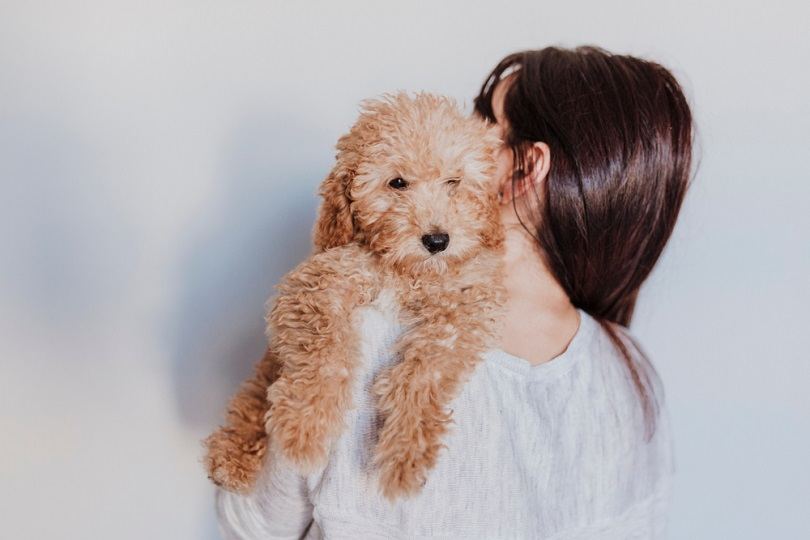
We think that you will find that the miniature and toy poodles are more alike than they are different. The only major difference is the size. Here are some similarities to speak of so you know what it’s like to own both of these beautiful size variations of the intelligent, charismatic poodle.
Physical Similarities
The toy and miniature poodle are very structurally similar. In fact, unless you know the size variations, you might not see the difference. Toy poodles are a few pounds lighter than they are miniature counterparts. But they are colors, and fur textures are the same.
Both dogs can have a white mask, black mask, or black points.
- Apricot
- Black
- Black and brown
- Black and silver
- Black and Tan
- Black and gray
- Black and white
- Blue
- Blue and white
- Brown
- Brown and white
- Café au lait
- Cream
- Cream and white
- Gray
- Gray and white
- Red
- Red and white
- Red and apricot
- Silver
- Silver and beige
- White
- White and apricot
- Black and apricot
- Brown and apricot
Health Issues
A few health issues might arise when you own a toy or a miniature poodle. Both the toy and miniature poodle are pretty healthy critters. The main difference between the two is that the toy poodles’ smaller structure is more prone to injury and temperature.
- Glaucoma
- Legg Perthes disease
- Patellar luxation
- Addison’s disease
- Thyroid issues
- Epilepsy
Hypoallergenic Qualities
Thanks to their beautifully downy fur, both a toy and miniature poodle are considered hypoallergenic. While no dogs ever won hundred percent Hypoallergenic, these pups are about as close as you can get.
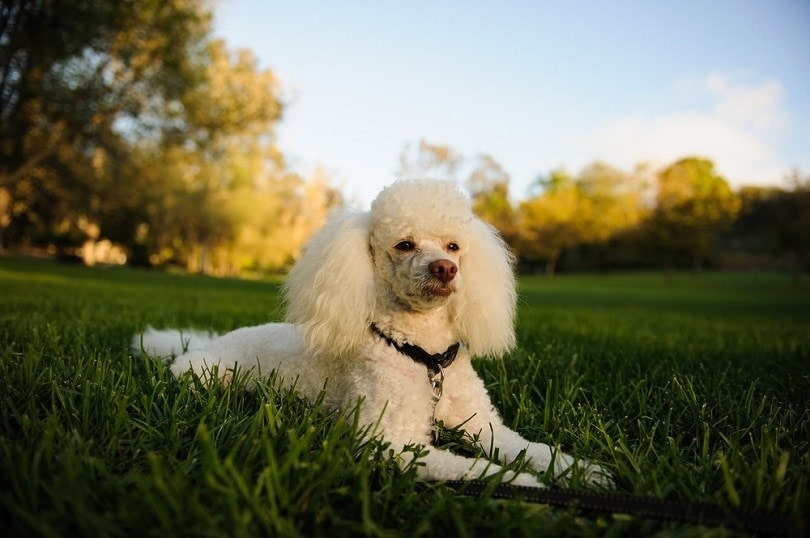
Bathroom Problems
Both toy and miniature poodles have very tiny bladders matching their very little bodies. Because they will need to use the potty more frequently, this can cause bathroom issues. Since they are both smaller dogs, they might also be a little sneaky here about the outdoor elements.
Some people prefer puppy pad training because it prevents accidents in the home. Of course, they are still completely capable of being entirely housebroken, and you’ll just have to use your discretion with each individual dog.
Grooming
Both toy and miniature poodles will need regular maintenance to maintain a healthy coat. They have beautiful curly, downy textured coats that get long if you do not cut them. You can cut your poodle and a bunch of different super cool hairstyles.
You can take them to the professional groomer or choose to do that at home yourself. But no matter what you choose, it’s best to keep up with routine grooming and brushing to prevent gnats and tangles from forming.
Apartment Living
Both the toy and miniature poodle work for most apartment weight limitations. So, if your apartment allows pets, it probably won’t matter which one you choose–both stay below 20 pounds.
Which Breed Is Right For You?
Both toy and miniature poodles make fantastic additions to many different environments. However, we do recommend the toy breed if you have adults in the home with like-sized pets. Toy poodles are so tiny that they can get easily injured, even during regular play.
Toy poodles work best for single pet homes, homes with older children, and homes with calmer pets. But they also work very well for retired couples or seniors who have a laidback lifestyle.
Featured Image Credit: (L) Lim Teaw Teong, Shutterstock | (R) Sue Thatcher, Shutterstock




